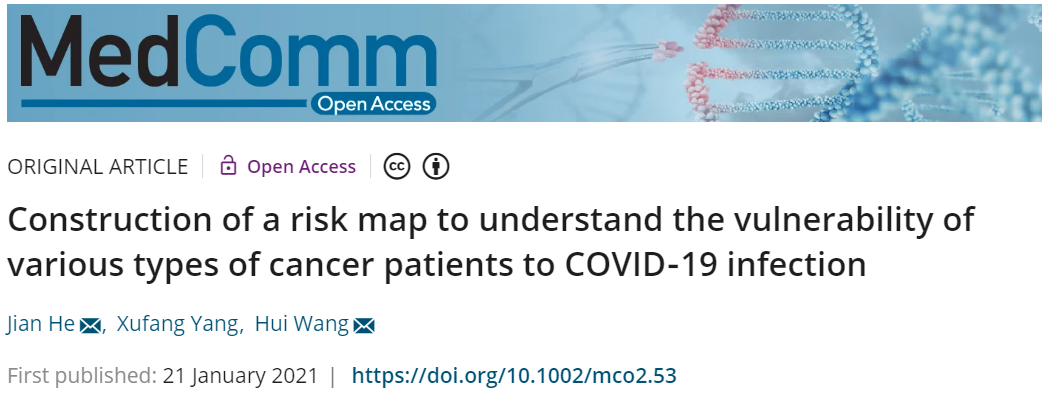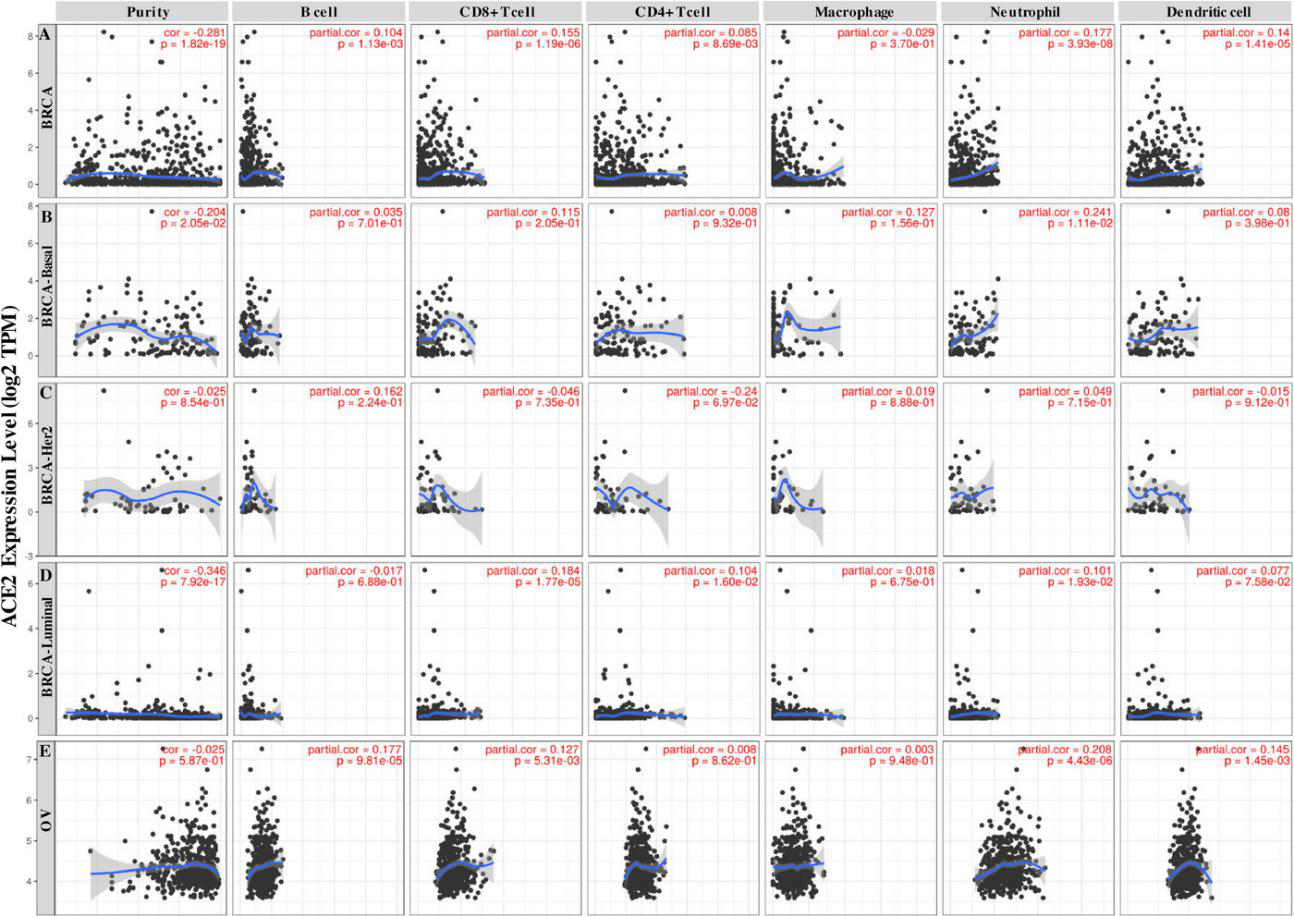MedComm | Construction of a risk map to understand the vulnerability of various types of cancer patients to COVID-19 infection

Open the phone and scan
COVID-19 is leading to a global pandemic and invades human cells via ACE2. So ACE2 is considered to be the receptor in host cells for binding to this novel virus. Therefore, the target cells with the expression of ACE2 are susceptible to COVID-19 infection, for example AT2 cells in lung. So in the same way, any organ that expresses ACE2 may be susceptible to COVID-19 infection, and many research groups have reported this situation. All these findings indicate the potential risk of various cell types and organs with high-expression ACE2 will be vulnerable to COVID-19 attacks.

However, there is no evidence about the potential risk of various types of cancer patients vulnerable to the infection of COVID-19. To obtain a risk map that indicates the novel coronavirus vulnerability of different types of cancer, the authors analyzed in this work the RNA sequencing datasets of cancer patients. By interrogating the datasets, the author not only identified the cancer types vulnerable to COVID-19 attacks, but also reported that variations in the mRNA expression level of ACE2 correlate to various prognosis phenomenon in different types of cancer cohorts, and illustrated the underlying mechanism involved or may be related to lymphocytes infiltration (Fig.1). From these discoveries, the authors constructed an infection risk map, which indicates the vulnerability of different types of cancer to COVID-19 infection, also elucidated the correlationship between ACE2 and the prognosis of cancer. They found that high ACE2 expression levels lead to high risk of COVID-19 infection and poor prognosis of breast invasive carcinoma (BRCA), while better prognosis in ovarian serous cystadenocarcinoma (OV) patient cohorts. Moreover, this study demonstrated that this different pattern may correlate with the immune infiltration level.

Fig. 1 Correlation of ACE2 expression with immune infiltration level in (A) BRCA, (B) BRCA-basel, (C) BRCA-Her2, (D) BRCAluminal, and (E) OV
Article Access: https://onlinelibrary.wiley.com/doi/full/10.1002/mco2.53
Website for MedComm: https://onlinelibrary.wiley.com/journal/26882663
Looking forward to your contributions.


